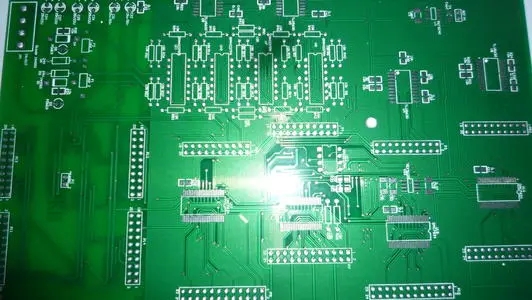1. There must be a reasonable direction: such as input/output, AC/DC, strong/weak signal, high frequency/low frequency, high voltage/low voltage, etc..., their directions should be linear (or separated), not mutually blend. Its purpose is to prevent mutual interference. The best trend is in a straight line, but it is generally not easy to achieve. The most unfavorable trend is a circle. Fortunately, isolation can be set to improve. For DC, small signal, low voltage PCB design requirements can be lower. So "reasonable" is relative.

2. Reasonably arrange the power supply filter/decoupling capacitors: Generally, only a number of power supply filter/decoupling capacitors are drawn in the schematic, but they are not pointed out where they should be connected. In fact, these capacitors are provided for switching devices (gate circuits) or other components that require filtering/decoupling. These capacitors should be placed as close to these components as possible, and they will be useless if they are too far away. Interestingly, when the power supply filter/decoupling capacitors are arranged properly, the problem of the grounding point becomes less obvious.
3. The lines are exquisite: wide lines should never be thin if possible; high-voltage and high-frequency lines should be round and slippery, without sharp chamfers, and corners should not be at right angles. The ground wire should be as wide as possible, and it is best to use a large area of copper, which can considerably improve the problem of grounding points.
4. Choose a good grounding point: I don't know how many engineers and technicians have talked about the small grounding point, which shows its importance. Under normal circumstances, a common ground is required, for example: multiple ground wires of the forward amplifier should be merged and then connected to the main ground.... In reality, it is difficult to achieve this completely due to various restrictions, but we should try our best to follow it. This question is quite flexible in practice. Everyone has their own set of solutions. It is easy to understand if it can be explained for a specific circuit board.
5. Although some problems occur in post-production, they are brought about by PCB design. They are:
(1) The size of the pad or the wire hole is too small, or the pad size and the drill hole size are not properly matched. The former is unfavorable for manual drilling, and the latter is unfavorable for CNC drilling. It is easy to drill the pad into a "c" shape, but to drill off the pad.
(2) The distance between the solder joints is too small, which is not conducive to manual welding, and the welding quality can only be solved by reducing the work efficiency. Otherwise, hidden dangers will remain. Therefore, the minimum distance of solder joints should be determined by comprehensive consideration of the quality and work efficiency of the welding personnel.
(3) The wire is too thin, and the large area of the unwiring area is not provided with copper, which is easy to cause uneven corrosion. That is, when the unwiring area is corroded, the thin wire is likely to be over corroded, or it may appear to be broken, or completely broken. Therefore, the role of setting copper is not only to increase the area of the ground wire and anti-interference.
(4) There are too many wire holes, the slightest carelessness of the copper sinking process will bury hidden dangers. Therefore, the design should minimize the wire hole. The density of parallel lines in the same direction is too large, and it is easy to join together when welding. Therefore, the line density should be determined according to the level of the welding process.
The above is the introduction of some precautions in the PCB design process. Ipcb is also provided to PCB manufacturers and PCB manufacturing technology